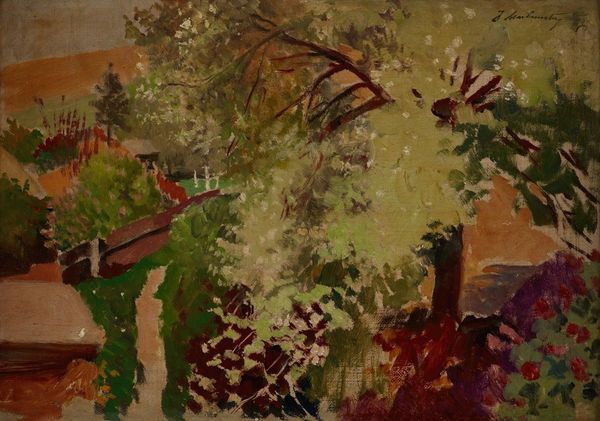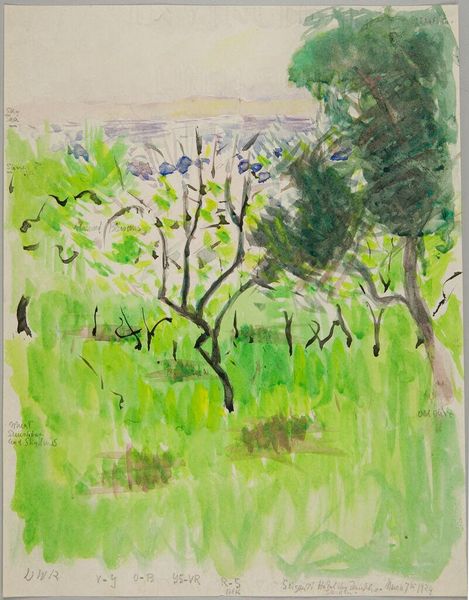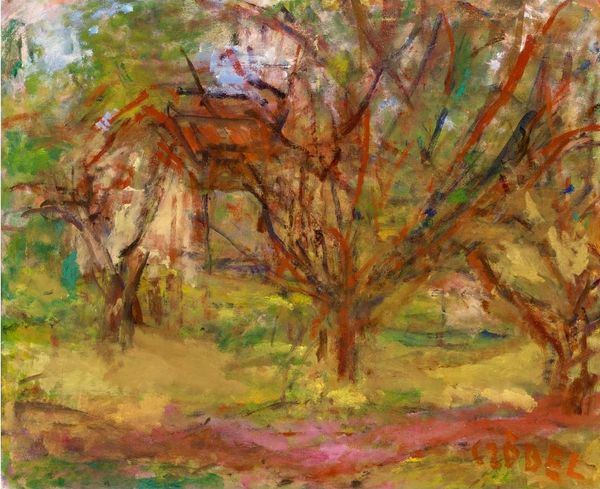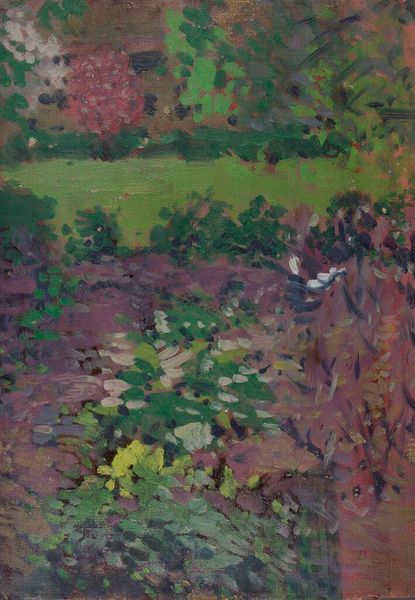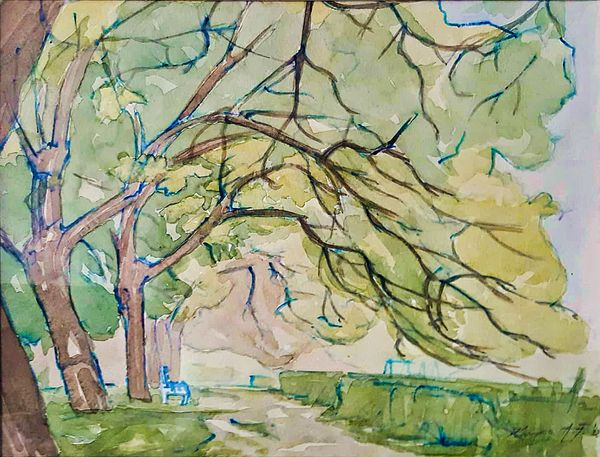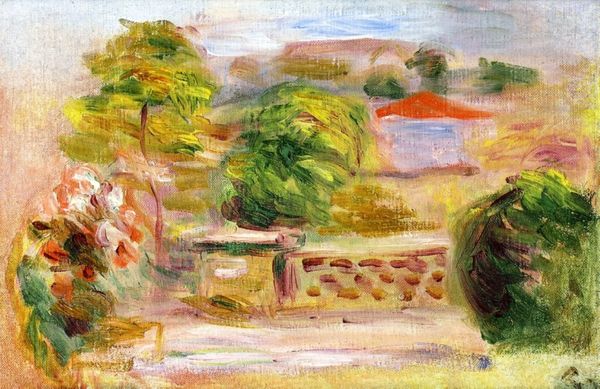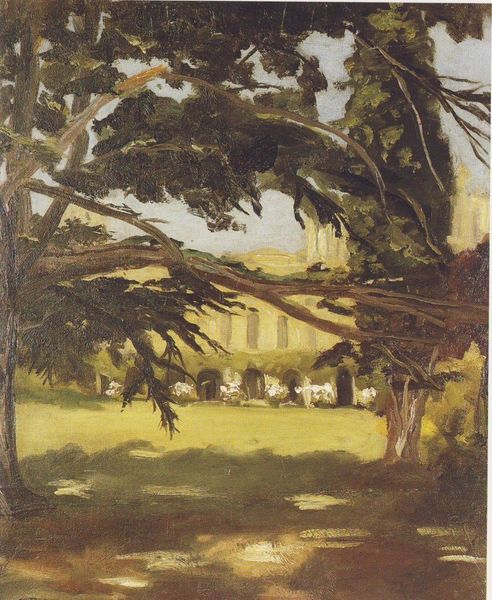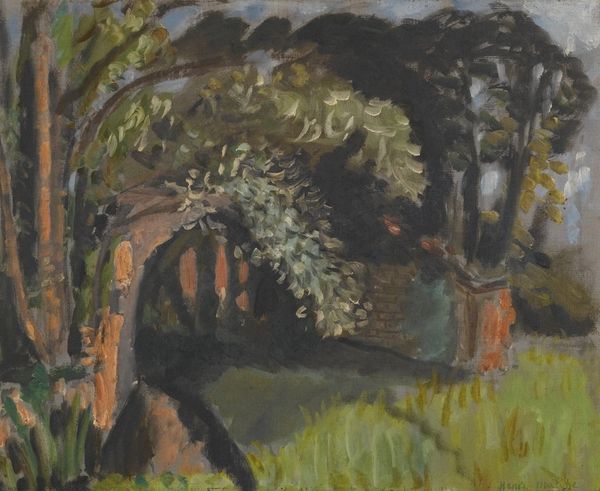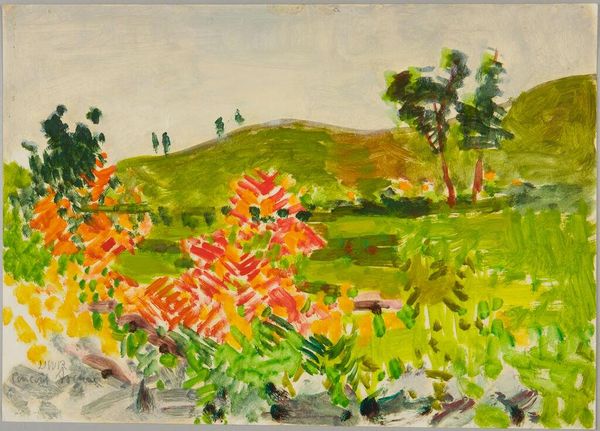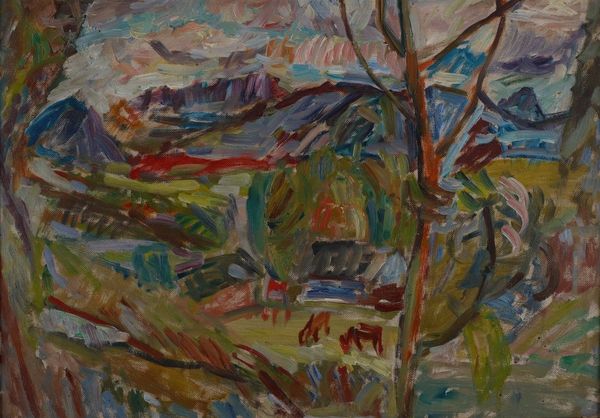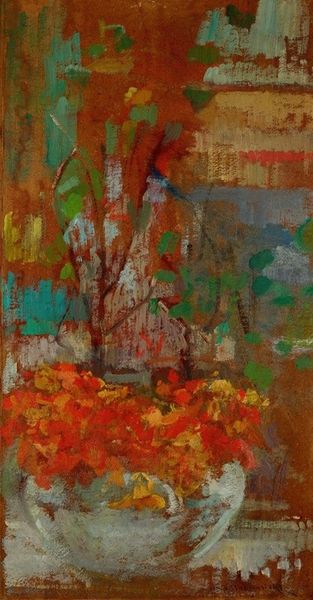
Copyright: Public Domain: Artvee
Editor: This is Jacek Malczewski’s "View of the Garden," painted between 1900 and 1904 using oil paint and possibly watercolors in the *plein-air* style. It feels so serene. Almost dreamlike. What’s your interpretation of it? Curator: Considering Malczewski’s context, his "View of the Garden" offers more than simple serenity. Painted during Poland's period of partitions, idyllic garden scenes became powerful symbols of national identity and lost paradise. How might a common scene, like a garden, become something more loaded? Editor: I guess the beauty is not just surface-level but represents a longing, perhaps for a free Poland? It makes you wonder about the artist's intention. Curator: Precisely. The impressionistic style softens the edges, obscuring details and potentially inviting subjective interpretations tied to national sentiment. How do you feel this contrasts with history painting of the era? Editor: History paintings usually feel grand and epic, trying to convey an agreed-upon narrative, while this garden scene feels personal and invites individual reflection. So the impact shifts from the collective to the individual experience of yearning for freedom, hidden in plain sight? Curator: Yes, that's insightful. Instead of heroic battles, it finds heroism in quiet reflection and personal connection to the land. What I’ve found most fascinating is how such unassuming images participated in maintaining and strengthening the collective memory of Poland, using the public art space in meaningful and subtle ways. Editor: I hadn't considered how something so seemingly simple could be a form of quiet resistance and cultural preservation. Thanks; I will never look at a landscape the same way!
Comments
No comments
Be the first to comment and join the conversation on the ultimate creative platform.
